RBS 2010 Annual Report Download - page 286
Download and view the complete annual report
Please find page 286 of the 2010 RBS annual report below. You can navigate through the pages in the report by either clicking on the pages listed below, or by using the keyword search tool below to find specific information within the annual report.-
 1
1 -
 2
2 -
 3
3 -
 4
4 -
 5
5 -
 6
6 -
 7
7 -
 8
8 -
 9
9 -
 10
10 -
 11
11 -
 12
12 -
 13
13 -
 14
14 -
 15
15 -
 16
16 -
 17
17 -
 18
18 -
 19
19 -
 20
20 -
 21
21 -
 22
22 -
 23
23 -
 24
24 -
 25
25 -
 26
26 -
 27
27 -
 28
28 -
 29
29 -
 30
30 -
 31
31 -
 32
32 -
 33
33 -
 34
34 -
 35
35 -
 36
36 -
 37
37 -
 38
38 -
 39
39 -
 40
40 -
 41
41 -
 42
42 -
 43
43 -
 44
44 -
 45
45 -
 46
46 -
 47
47 -
 48
48 -
 49
49 -
 50
50 -
 51
51 -
 52
52 -
 53
53 -
 54
54 -
 55
55 -
 56
56 -
 57
57 -
 58
58 -
 59
59 -
 60
60 -
 61
61 -
 62
62 -
 63
63 -
 64
64 -
 65
65 -
 66
66 -
 67
67 -
 68
68 -
 69
69 -
 70
70 -
 71
71 -
 72
72 -
 73
73 -
 74
74 -
 75
75 -
 76
76 -
 77
77 -
 78
78 -
 79
79 -
 80
80 -
 81
81 -
 82
82 -
 83
83 -
 84
84 -
 85
85 -
 86
86 -
 87
87 -
 88
88 -
 89
89 -
 90
90 -
 91
91 -
 92
92 -
 93
93 -
 94
94 -
 95
95 -
 96
96 -
 97
97 -
 98
98 -
 99
99 -
 100
100 -
 101
101 -
 102
102 -
 103
103 -
 104
104 -
 105
105 -
 106
106 -
 107
107 -
 108
108 -
 109
109 -
 110
110 -
 111
111 -
 112
112 -
 113
113 -
 114
114 -
 115
115 -
 116
116 -
 117
117 -
 118
118 -
 119
119 -
 120
120 -
 121
121 -
 122
122 -
 123
123 -
 124
124 -
 125
125 -
 126
126 -
 127
127 -
 128
128 -
 129
129 -
 130
130 -
 131
131 -
 132
132 -
 133
133 -
 134
134 -
 135
135 -
 136
136 -
 137
137 -
 138
138 -
 139
139 -
 140
140 -
 141
141 -
 142
142 -
 143
143 -
 144
144 -
 145
145 -
 146
146 -
 147
147 -
 148
148 -
 149
149 -
 150
150 -
 151
151 -
 152
152 -
 153
153 -
 154
154 -
 155
155 -
 156
156 -
 157
157 -
 158
158 -
 159
159 -
 160
160 -
 161
161 -
 162
162 -
 163
163 -
 164
164 -
 165
165 -
 166
166 -
 167
167 -
 168
168 -
 169
169 -
 170
170 -
 171
171 -
 172
172 -
 173
173 -
 174
174 -
 175
175 -
 176
176 -
 177
177 -
 178
178 -
 179
179 -
 180
180 -
 181
181 -
 182
182 -
 183
183 -
 184
184 -
 185
185 -
 186
186 -
 187
187 -
 188
188 -
 189
189 -
 190
190 -
 191
191 -
 192
192 -
 193
193 -
 194
194 -
 195
195 -
 196
196 -
 197
197 -
 198
198 -
 199
199 -
 200
200 -
 201
201 -
 202
202 -
 203
203 -
 204
204 -
 205
205 -
 206
206 -
 207
207 -
 208
208 -
 209
209 -
 210
210 -
 211
211 -
 212
212 -
 213
213 -
 214
214 -
 215
215 -
 216
216 -
 217
217 -
 218
218 -
 219
219 -
 220
220 -
 221
221 -
 222
222 -
 223
223 -
 224
224 -
 225
225 -
 226
226 -
 227
227 -
 228
228 -
 229
229 -
 230
230 -
 231
231 -
 232
232 -
 233
233 -
 234
234 -
 235
235 -
 236
236 -
 237
237 -
 238
238 -
 239
239 -
 240
240 -
 241
241 -
 242
242 -
 243
243 -
 244
244 -
 245
245 -
 246
246 -
 247
247 -
 248
248 -
 249
249 -
 250
250 -
 251
251 -
 252
252 -
 253
253 -
 254
254 -
 255
255 -
 256
256 -
 257
257 -
 258
258 -
 259
259 -
 260
260 -
 261
261 -
 262
262 -
 263
263 -
 264
264 -
 265
265 -
 266
266 -
 267
267 -
 268
268 -
 269
269 -
 270
270 -
 271
271 -
 272
272 -
 273
273 -
 274
274 -
 275
275 -
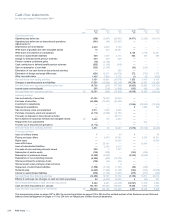 276
276 -
 277
277 -
 278
278 -
 279
279 -
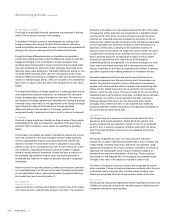 280
280 -
 281
281 -
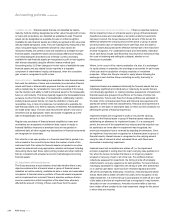 282
282 -
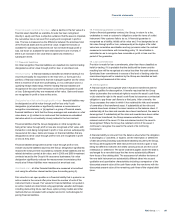 283
283 -
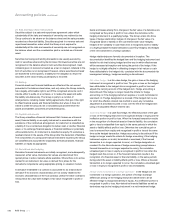 284
284 -
 285
285 -
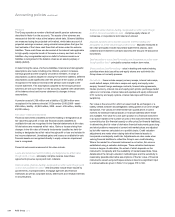 286
286 -
 287
287 -
 288
288 -
 289
289 -
 290
290 -
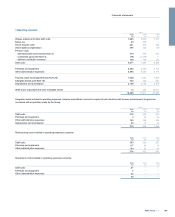 291
291 -
 292
292 -
 293
293 -
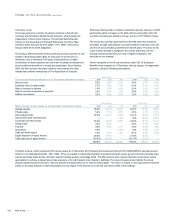 294
294 -
 295
295 -
 296
296 -
 297
297 -
 298
298 -
 299
299 -
 300
300 -
 301
301 -
 302
302 -
 303
303 -
 304
304 -
 305
305 -
 306
306 -
 307
307 -
 308
308 -
 309
309 -
 310
310 -
 311
311 -
 312
312 -
 313
313 -
 314
314 -
 315
315 -
 316
316 -
 317
317 -
 318
318 -
 319
319 -
 320
320 -
 321
321 -
 322
322 -
 323
323 -
 324
324 -
 325
325 -
 326
326 -
 327
327 -
 328
328 -
 329
329 -
 330
330 -
 331
331 -
 332
332 -
 333
333 -
 334
334 -
 335
335 -
 336
336 -
 337
337 -
 338
338 -
 339
339 -
 340
340 -
 341
341 -
 342
342 -
 343
343 -
 344
344 -
 345
345 -
 346
346 -
 347
347 -
 348
348 -
 349
349 -
 350
350 -
 351
351 -
 352
352 -
 353
353 -
 354
354 -
 355
355 -
 356
356 -
 357
357 -
 358
358 -
 359
359 -
 360
360 -
 361
361 -
 362
362 -
 363
363 -
 364
364 -
 365
365 -
 366
366 -
 367
367 -
 368
368 -
 369
369 -
 370
370 -
 371
371 -
 372
372 -
 373
373 -
 374
374 -
 375
375 -
 376
376 -
 377
377 -
 378
378 -
 379
379 -
 380
380 -
 381
381 -
 382
382 -
 383
383 -
 384
384 -
 385
385 -
 386
386 -
 387
387 -
 388
388 -
 389
389 -
 390
390 -
 391
391 -
 392
392 -
 393
393 -
 394
394 -
 395
395 -
 396
396 -
 397
397 -
 398
398 -
 399
399 -
 400
400 -
 401
401 -
 402
402 -
 403
403 -
 404
404 -
 405
405 -
 406
406 -
 407
407 -
 408
408 -
 409
409 -
 410
410 -
 411
411 -
 412
412 -
 413
413 -
 414
414 -
 415
415 -
 416
416 -
 417
417 -
 418
418 -
 419
419 -
 420
420 -
 421
421 -
 422
422 -
 423
423 -
 424
424 -
 425
425 -
 426
426 -
 427
427 -
 428
428 -
 429
429 -
 430
430 -
 431
431 -
 432
432 -
 433
433 -
 434
434 -
 435
435 -
 436
436 -
 437
437 -
 438
438 -
 439
439 -
 440
440 -
 441
441 -
 442
442 -
 443
443 -
 444
444 -
 445
445
 |
 |
Pensions
The Group operates a number of defined benefit pension schemes as
described in Note 4 on the accounts. The assets of the schemes are
measured at their fair value at the balance sheet date. Scheme liabilities
are measured using the projected unit method, which takes account of
projected earnings increases, using actuarial assumptions that give the
best estimate of the future cash flows that will arise under the scheme
liabilities. These cash flows are discounted at the interest rate applicable
to high-quality corporate bonds of the same currency and term as the
liabilities. Any recognisable surplus or deficit of scheme assets over
liabilities is recognised in the balance sheet as an asset (surplus) or
liability (deficit).
In determining the value of scheme liabilities, financial and demographic
assumptions are made including price inflation, pension increases,
earnings growth and the longevity of scheme members. A range of
assumptions could be adopted in valuing the schemes' liabilities. Different
assumptions could significantly alter the amount of the surplus or deficit
recognised in the balance sheet and the pension cost charged to the
income statement. The assumptions adopted for the Group's pension
schemes are set out in Note 4 on the accounts, together with sensitivities
of the balance sheet and income statement to changes in those
assumptions.
Apension asset of £105 million and a liability of £2,288 million were
recognised in the balance sheet at 31 December 2010 (2009 - asset -
£58 million, liability - £2,963 million; 2008 - asset - £36 million, liability -
£2,032 million).
Fair value - financial instruments
Financial instruments classified as held-for-trading or designated as at
fair value through profit or loss and financial assets classified as
available-for-sale are recognised in the financial statements at fair value.
All derivatives are measured at fair value. Gains or losses arising from
changes in the fair value of financial instruments classified as held-for-
trading or designated as at fair value through profit or loss are included in
the income statement. Unrealised gains and losses on available-for-sale
financial assets are recognised directly in equity unless an impairment
loss is recognised.
Financial instruments measured at fair value include:
Loans and advances (held-for-trading and designated as at fair value
though profit or loss) - principally comprise reverse repurchase
agreements (reverse repos) and cash collateral.
Debt securities (held-for-trading, designated as at fair value though profit
or loss and available-for-sale) - debt securities include those issued by
governments, municipal bodies, mortgage agencies and financial
institutions as well as corporate bonds, debentures and residual interests
in securitisations.
Equity securities (held-for-trading, designated as at fair value though
profit or loss and available-for-sale) - comprise equity shares of
companies or corporations both listed and unlisted.
Deposits by banks and customer accounts (held-for-trading and
designated as at fair value though profit or loss) - deposits measured at
fair value principally include repurchase agreements (repos), cash
collateral and investment contracts issued by the Group's life assurance
businesses.
Debt securities in issue (held-for-trading and designated as at fair value
though profit or loss) - principally comprise medium term notes.
Short positions (held-for-trading) - arise in dealing and market making
activities where debt securities and equity shares are sold which the
Group does not currently possess.
Derivatives - these include swaps (currency swaps, interest rate swaps,
credit default swaps, total return swaps and equity and equity index
swaps), forward foreign exchange contracts, forward rate agreements,
futures (currency, interest rate and equity) and options (exchange-traded
options on currencies, interest rates and equities and equity indices and
OTC currency and equity options, interest rate caps and floors and
swaptions).
Fair value is the amount for which an asset could be exchanged, or a
liability settled, between knowledgeable, willing parties in an arm’s length
transaction. Fair values are determined from quoted prices in active
markets for identical financial assets or financial liabilities where these
are available. Fair value for a net open position in a financial instrument
in an active market is the number of units of the instrument held times the
current bid price (for financial assets) or offer price (for financial liabilities).
In determining the fair value of derivative financial instruments gross long
and short positions measured at current mid market prices are adjusted
by bid-offer reserves calculated on a portfolio basis. Credit valuation
adjustments are made when valuing derivative financial assets to
incorporate counterparty credit risk. Adjustments are also made when
valuing financial liabilities to reflect the Group’s own credit standing.
Where the market for a financial instrument is not active, fair value is
established using a valuation technique. These valuation techniques
involve a degree of estimation, the extent of which depends on the
instrument’s complexity and the availability of market-based data. More
details about the Group’s valuation methodologies and the sensitivity to
reasonably possible alternative assumptions of the fair value of financial
instruments valued using techniques where at least one significant input
is unobservable are given in Note 12 on pages 310 to 324.
RBS Group 2010284
Accounting policies continued
